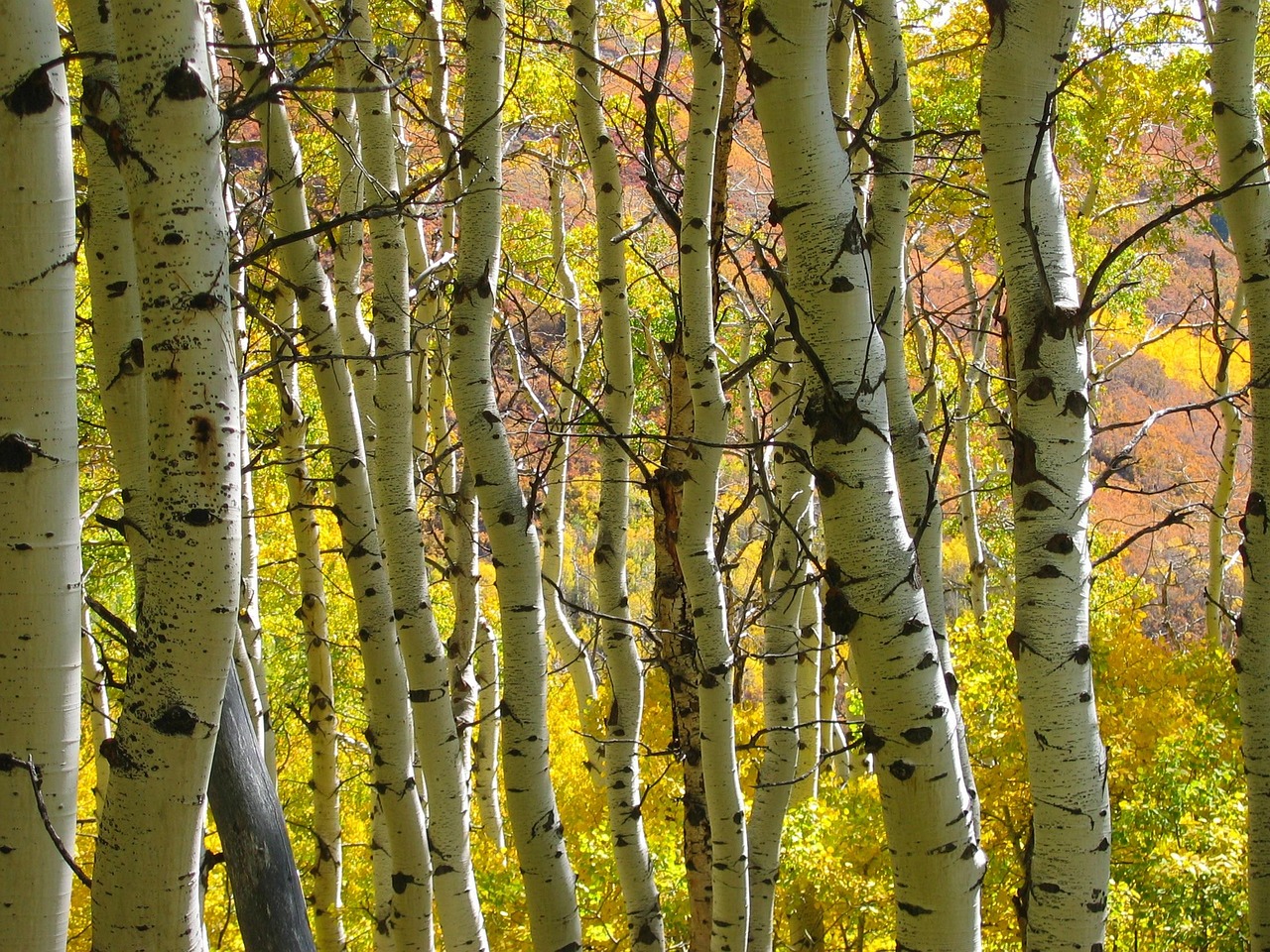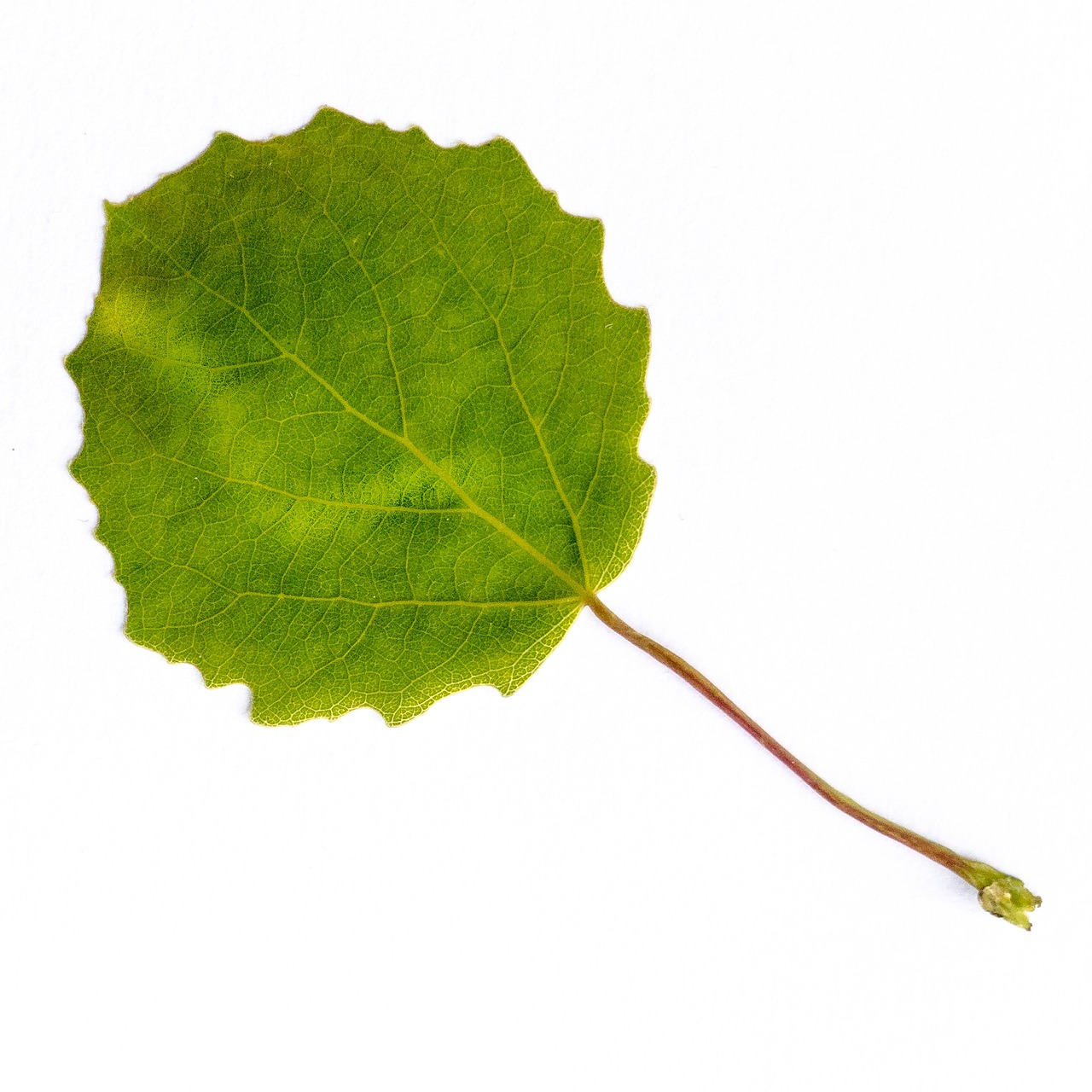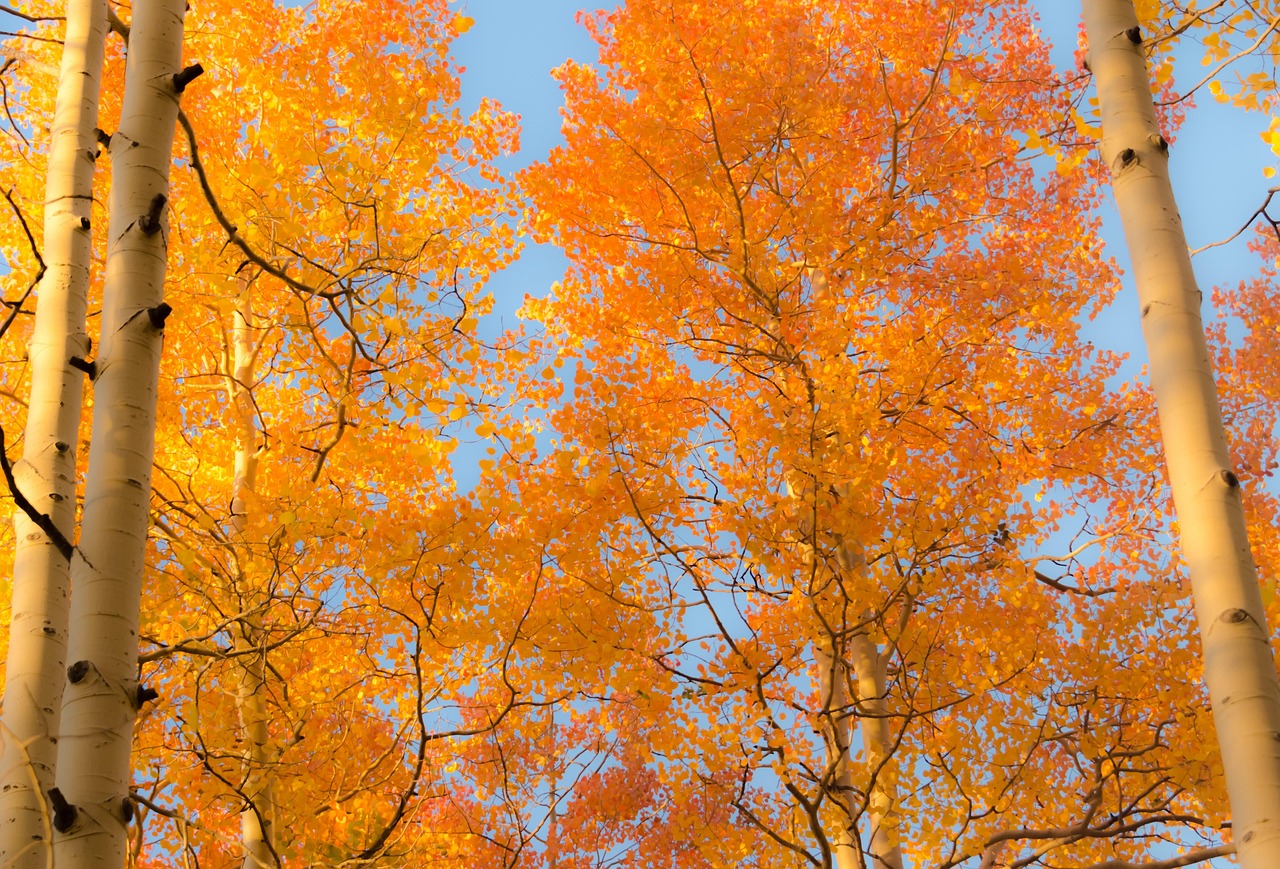Aspen trees are known for their smooth white bark and trembling leaves, while birch trees are recognized for their distinctive peeling bark and vibrant autumn colors. Both trees thrive in similar environments but differ significantly in their growth habits, leaf structure, and ecological roles.
Aspen trees belong to the Populus genus, which includes various types of poplar trees. They are particularly famous for their ability to grow in clonal colonies. This means that a group of aspen trees can share a single root system, allowing them to regenerate quickly after disturbances. The leaves of aspen trees are round to heart-shaped and have finely serrated edges, contributing to their characteristic trembling appearance as they flutter in the wind.
On the other hand, birch trees, classified under the Betula genus, are appreciated for their aesthetic appeal and ecological importance. They feature thin, papery bark that peels away in layers, giving them a unique appearance. Birch leaves are typically ovate with serrated margins and turn bright yellow or gold in the fall, adding a splash of color to the landscape. These trees play a vital role in their ecosystems by providing habitat and food for various wildlife species.
Aspen Tree Characteristics

Aspen trees are remarkably adaptable and can thrive in various soil types, though they prefer well-drained soils. Their rapid growth rate makes them an essential species for reforestation projects and ecosystem recovery following events like wildfires. Here are some key characteristics of aspen trees:
- Height: Typically range from 20 to 80 feet tall.
- Bark: Smooth, white bark that often features black knots.
- Leaves: Heart-shaped with a serrated edge; bright green in summer.
- Growth Habit: Often grows in clusters due to underground root systems.
- Ecological Role: Provides shelter and food for various wildlife, including birds and mammals.
Birch Tree Characteristics
Birch trees are equally diverse and can be found in a range of environments. They prefer moist, well-drained soils but can also tolerate poorer conditions. Birch trees are often planted for ornamental purposes due to their striking appearance. Below are some defining characteristics of birch trees:
- Height: Generally grow between 30 to 70 feet tall.
- Bark: Distinctive peeling white or yellowish bark that can also be reddish-brown.
- Leaves: Ovate with serrated edges; vibrant yellow in the fall.
- Growth Habit: Can grow singly or in clumps; often found in mixed forests.
- Ecological Role: Supports a variety of insects and birds; often serves as a pioneer species.
Both aspen and birch trees contribute significantly to their ecosystems. They offer shade, improve soil quality, and enhance biodiversity. However, their differences extend beyond just physical appearance. Understanding these characteristics assists in appreciating their roles within our forests and landscapes.
The comparison between these two tree species reveals not only their unique traits but also their shared habitats and ecological functions. As we explore further into their distinctions, we can better understand how each tree contributes to its environment.
Environmental Preferences
Understanding the environmental preferences of aspen and birch trees is crucial for their successful cultivation and conservation. Both species thrive in similar conditions, but they also exhibit unique preferences that influence their distribution and growth patterns.
Aspen Tree Environmental Preferences
Aspen trees are particularly adaptable and can grow in a variety of soil types. However, they flourish best in well-drained, sandy or loamy soils. Their ability to grow in disturbed areas makes them pioneers in post-fire recovery. Here are some key aspects of their environmental preferences:
- Soil Moisture: Aspens prefer moderately moist soils but can tolerate drier conditions once established.
- Sunlight: Full sun exposure is ideal for optimal growth. They thrive in open areas where they can receive ample light.
- Temperature Range: Aspen trees are hardy and can withstand cold temperatures, making them suitable for northern climates.
- Elevation: They typically grow at elevations ranging from sea level to about 12,000 feet.
Birch Tree Environmental Preferences
Birch trees also favor specific environmental conditions that support their growth. While they can adapt to various soils, birches generally prefer moist, well-drained locations. The following characteristics outline their environmental needs:
- Soil Type: Birch trees thrive in acidic to neutral soils rich in organic matter.
- Moisture Levels: They require consistent moisture levels, making them common near rivers, lakes, and wetlands.
- Light Conditions: Birch trees prefer full sun to partial shade but may struggle in heavily shaded areas.
- Temperature Tolerance: They are also tolerant of cold weather but can be sensitive to extreme heat.
Growth Rates and Lifespan
The growth rates and lifespans of aspen and birch trees differ significantly, influencing their roles in forests and landscapes. Knowing these factors helps in selecting the right species for specific needs.
Aspen Tree Growth Rates
Aspen trees are known for their rapid growth. Under ideal conditions, they can reach heights of 30 to 50 feet within a few decades. Their growth rate is often accelerated by their clonal nature, allowing them to spread quickly through underground root systems. Key points about their growth include:
- Initial Growth: Aspen trees can grow up to 3 feet per year during their early years.
- Mature Size: They typically reach maturity within 20-30 years.
- Lifespan: The average lifespan of an aspen tree is around 30 to 50 years, although some can live longer under ideal circumstances.
Birch Tree Growth Rates
Birch trees have a more moderate growth rate compared to aspens. They generally take longer to reach their full height and often grow between 1 to 2 feet per year. Their growth patterns include:
- Initial Growth: Young birch trees may grow rapidly in their early years, but growth slows as they mature.
- Mature Size: Birch trees typically reach their full height of 30 to 70 feet within 20-50 years.
- Lifespan: The lifespan of birch trees ranges from 40 to 100 years, depending on species and environmental conditions.
The differences in growth rates and lifespans highlight how aspen and birch trees contribute to forest dynamics. Aspens are quick colonizers, while birches provide long-term stability and beauty to landscapes. Understanding these characteristics aids in better forest management and planting strategies.
Common Pests and Diseases
Biodiversity is an integral part of forest ecosystems, but it also presents challenges. Both aspen and birch trees face threats from various pests and diseases that can affect their health and longevity.
Pests Affecting Aspen Trees
Aspen trees are susceptible to several pests that can cause significant damage if not managed properly. Common pests include:
- Aspen Leaf Miner: This insect larvae burrow into the leaves, causing stippling and leaf drop.
- Eastern Tent Caterpillar: These caterpillars create webs in the branches, defoliating the tree.
- Aspen Borers: These beetles bore into the wood, weakening the tree structure over time.
Pests Affecting Birch Trees
Birch trees also encounter pests that can threaten their health. Notable pests include:

- Birch Borer: This beetle tunnels into the bark, leading to crown dieback and eventual tree decline.
- Leaf Beetles: These insects feed on birch foliage, causing unsightly damage and stress to the tree.
- Aphids: Birch aphids can weaken trees by sucking sap from leaves, leading to yellowing and stunted growth.
Both aspen and birch trees must contend with diseases such as fungal infections that can compromise their structural integrity and health. Recognizing these threats allows for better management practices to ensure the longevity of these beautiful tree species.
Ecological Benefits of Aspen and Birch Trees

Aspen and birch trees provide numerous ecological benefits that play vital roles in their respective ecosystems. Their presence enhances biodiversity, stabilizes soils, and supports various wildlife species. Understanding these contributions helps in recognizing their importance in forest management and conservation efforts.
Benefits of Aspen Trees
Aspen trees are often referred to as “pioneer species” because they are among the first to colonize disturbed areas. This ability allows them to set the stage for other plant species to establish themselves. The ecological benefits of aspen trees include:
- Soil Stabilization: The extensive root systems of aspen trees help prevent soil erosion, particularly in areas prone to disturbance.
- Wildlife Habitat: Aspen groves provide shelter and food for a variety of animals, including deer, birds, and small mammals.
- Biodiversity Enhancement: By creating microhabitats, aspens support diverse plant and animal life, promoting overall ecosystem health.
- Carbon Sequestration: Aspens absorb carbon dioxide from the atmosphere, playing a role in mitigating climate change.
Benefits of Birch Trees
Birch trees also offer significant ecological advantages, contributing to the health of their environments. Their unique characteristics make them valuable in both forest ecosystems and urban settings. Key benefits of birch trees include:
- Habitat Creation: Birch trees support various wildlife, including birds and insects, providing nesting sites and food sources.
- Soil Improvement: The leaf litter from birch trees enriches the soil with organic matter, enhancing nutrient availability for other plants.
- Pioneer Role: Like aspen trees, birches can thrive in disturbed soils and help prepare the ground for subsequent plant species.
- Aesthetic Value: The striking appearance of birch trees enhances landscapes, making them popular choices for landscaping and urban planting.
Cultural Significance of Aspen and Birch Trees
Both aspen and birch trees hold cultural significance in many regions. They are often featured in folklore, art, and traditional practices. Understanding their cultural roles can deepen appreciation for these tree species.
Cultural Importance of Aspen Trees
Aspen trees are cherished in various cultures for their beauty and resilience. Some cultural aspects include:
- Symbolism: Aspens are often seen as symbols of strength and unity due to their clonal growth habits.
- Native American Traditions: Several Native American tribes utilize aspen wood for crafts and traditional practices, recognizing its significance in their heritage.
- Artistic Inspiration: The striking appearance of aspens has inspired countless artists and photographers, particularly during autumn when their leaves turn golden.
Cultural Importance of Birch Trees
Birch trees also feature prominently in cultural narratives and practices around the world. Key cultural aspects include:
- Folklore and Mythology: Birch trees are often associated with renewal and rebirth in various mythologies, symbolizing new beginnings.
- Traditional Uses: Birch bark has been historically used by Indigenous peoples for making canoes, baskets, and shelters due to its durability and flexibility.
- Cultural Ceremonies: Birch trees are sometimes used in rituals and ceremonies, underscoring their importance in cultural traditions.
Landscaping and Urban Use

Aspen and birch trees are popular choices for landscaping due to their aesthetic appeal and functional benefits. Understanding their suitability for different environments can guide effective landscape design.
Aspen Trees in Landscaping
Aspen trees are often used in landscaping projects for their striking appearance and ability to create natural screens. Considerations for using aspen trees include:
- Spacing: Aspens should be planted with enough space to allow for their clonal growth habit without overcrowding.
- Sunlight Requirements: Ensure that they are planted in full sun to promote healthy growth.
- Soil Type: They thrive in well-drained soils but can adapt to a range of conditions.
Birch Trees in Landscaping
Birch trees are frequently used in urban landscapes because of their elegant form and striking bark. Important considerations for birch tree planting include:
- Aesthetic Appeal: Their white bark provides a beautiful contrast against green foliage, making them attractive focal points.
- Moisture Needs: Birches require consistent moisture; consider planting them near water sources or ensuring adequate irrigation.
- Pest Management: Regular monitoring for pests is essential to maintain the health of birch trees in urban settings.
The thoughtful integration of aspen and birch trees into landscapes not only enhances visual appeal but also contributes to environmental health. Their aesthetic qualities combined with ecological benefits make them valuable assets in both natural and urban settings.
Final Considerations for Aspen and Birch Trees
In summary, aspen and birch trees each possess distinct characteristics that make them unique and valuable in various ecological and cultural contexts. Both trees contribute significantly to their ecosystems, providing habitats for wildlife, enhancing soil health, and offering aesthetic beauty in landscapes. While aspens are known for their rapid growth and clonal nature, birches stand out for their striking bark and ecological roles as pioneer species.
Understanding the differences between these two tree types allows for informed decisions in forestry management, landscaping, and conservation efforts. Here are some additional considerations when choosing between aspen and birch trees:
- Climate Adaptability: While both trees can thrive in a range of climates, aspen trees are particularly suited for colder regions. Birch trees may struggle in extreme heat but excel in areas with consistent moisture.
- Maintenance Requirements: Aspens may require less maintenance once established due to their resilient nature. In contrast, birches may need more attention regarding pest management and irrigation.
- Growth Form: When selecting trees for landscaping, consider the growth habits. Aspens tend to spread rapidly, which can be beneficial for creating natural screens, while birches provide vertical elegance with their slender trunks.
Both trees also serve as important indicators of environmental health. Their presence in an area often signifies a well-balanced ecosystem, while their decline can indicate underlying ecological issues. Monitoring the health of aspen and birch populations can provide valuable insights into broader environmental changes.
Conclusion
Aspen and birch trees are not only vital components of forest ecosystems but also hold significant cultural and aesthetic value. By recognizing their unique characteristics and understanding the roles they play within their environments, we can better appreciate these remarkable tree species. Whether you are a homeowner considering landscaping options or a conservationist focused on preserving native species, knowing the differences between aspen and birch trees equips you with the knowledge to make informed decisions.
As we continue to face environmental challenges, embracing the strengths of both aspen and birch trees can contribute to biodiversity, enhance landscapes, and promote ecological health. Their resilience and beauty serve as reminders of nature’s complexity and the importance of nurturing our natural resources.
In conclusion, whether you find yourself captivated by the shimmering leaves of aspens or the elegant bark of birches, both tree species offer invaluable contributions to our world. Embracing their presence not only enriches our landscapes but also fosters a deeper connection to the environment around us.
